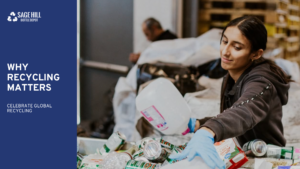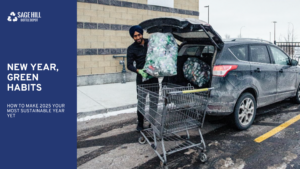What Do Items Get Turned Into When Recycled?
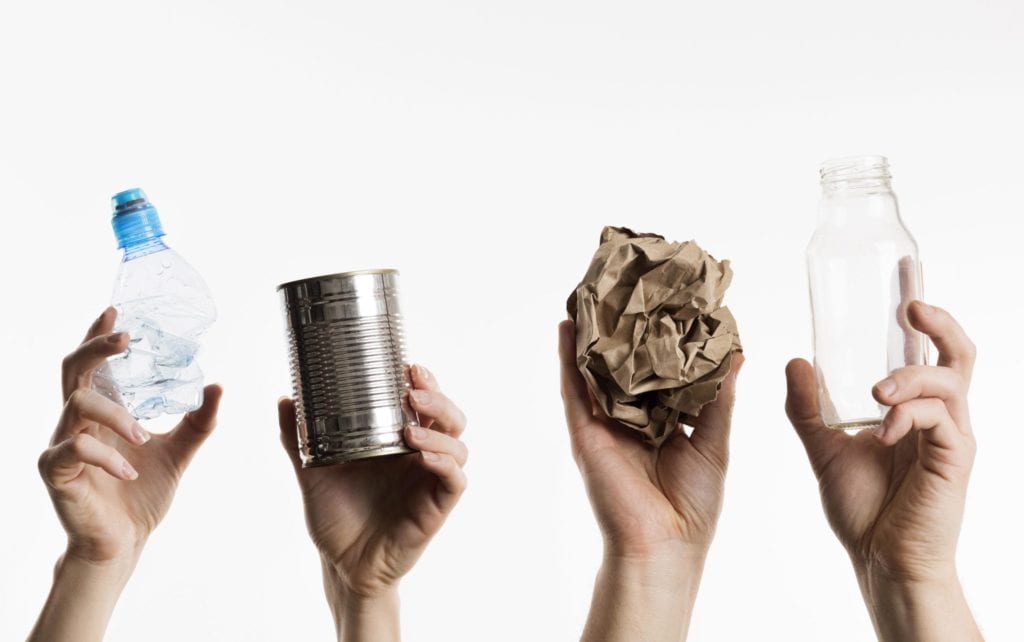
Have you ever wondered what happens to the items you bring to a recycling facility?
You might be surprised at what some of the products recycled materials get turned into. In fact, you might have several of these things lying around your house right now.
That minimalist centre table you bought last week? Could be the pile of newspapers you had in your basement for years!
How did that happen? Well, here’s a peek into the product end of the recycling process and a list of some useful things made from recycled materials.
1. Plastic
Plastic comprises most of the waste we produce, and luckily it’s also a widely recycled material.
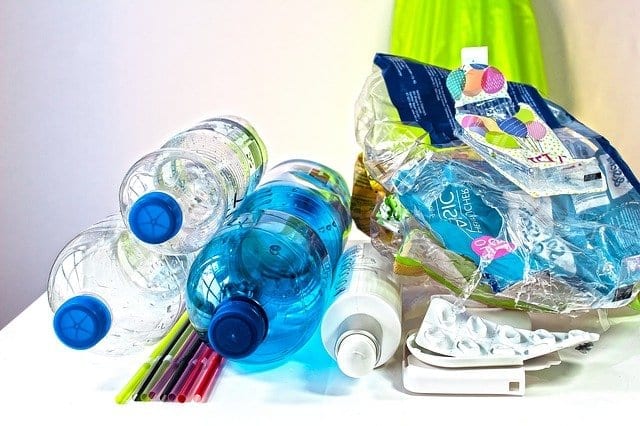
Some of the most used recycled and reused plastic materials include:
- plastic containers
- plastic bags
- plastic bottles
- trash bins
- plastic benches
How is plastic recycled?
Plastic is collected from homes and businesses. You can help at this stage by putting your plastic recycling at the road to be picked up for recycling, bringing your plastic to a recycling facility or bringing your plastic beverage containers to Sage Hill Bottle Depot.
The plastic is then separated and sorted by type and other properties, such as colour, thickness, and use.
After being sorted, the plastic products are washed to remove impurities like dirt, food residue, labels and adhesives.
The cleaned plastic is then shredded into smaller pieces that can be processed further for reuse.
This shredded plastic is placed inside a wind tunnel to separate the thinner pieces from the larger ones to identify and determine reusability.
Finally, the segregated shredded plastic is melted and crushed together to form pellets.
The type of plastic that is normally recyclable is polyethylene terephthalate (PET), which is commonly used for making most of the plastic containers we find at home.
Ironically, PET-grade plastic food containers make up most of the plastic waste we throw daily.
Recycled polyester
One of the most innovative products made from plastic is recycled polyester.
That’s right—polyester! That synthetic fabric that’s widely used in clothing, upholstery, padding, and more.
Polyester is usually derived from petroleum, a naturally occurring liquid found beneath the Earth’s surface. That means it takes time to form (like, millions of years—when the Earth was still forming itself).
Since we already use petroleum for various purposes, such as fuel, there’s a chance it will run out.
Luckily for us, some smart people have come up with ways to create polyester from plastic waste. It’s one of the success stories of recycled plastic bottles.
How is recycled polyester made?
Recycled polyester is made from the clear plastic bottles you bring to recycling centres.
They are separated from their lids or bottle caps and turned into plastic flakes.
These plastic flakes are then sold to companies that make recycled polyester fabric as well as other companies that are trying to create innovative products out of them.
Clothing
Innovative companies like Unifi purchase plastic flakes and convert them into small pellets. These pellets are then “melted, extruded and spun into polyester yarn.”
The yarn is dyed and blended, resulting in a fabric that surprisingly resembles wool.
The whole process saves money and energy because making new polyester requires petroleum and other fossil-fuel-based products.
Big companies, such as Adidas, H&M, GAP, and other clothing brands, are gradually incorporating recycled polyester into their design and manufacturing processes.
Some everyday products made from recycled polyester fabric include:
- Loungewear like t-shirts, shorts, and indoor clothing
- Sportswear, shoes, jerseys, shorts
- Outdoor wear like puffer jackets and fleece jackets
Prosthetics and artificial limbs
The field of medical research also offers an innovative solution to plastic pollution that can drive down the cost of prosthetics considerably.
De Monfort University Leicester in the UK is creating artificial limbs and prosthetics from ground-up plastic bottles.
These prosthetic limbs are actually made from recycled polyester fabric—yup, the same polyester we now use in clothing—that is moulded into artificial limbs.
As prosthetic limbs are very expensive, this new method is expected to be a big help to people desperately needing them, especially those living in developing countries.
In fact, two amputee patients in India have already tested the new prosthetic limbs and “were impressed with the material’s lightweight and breathability, as well as the prosthesis’ ease to walk with.”
Recycled polyester is definitely not a 100% solution for the world’s plastic bottle waste because continued remelting of PET plastic results in degradation.
On the bright side, it will definitely make good use of the almost 2 billion plastic water bottles consumed in Canada annually.
Flat-pack or ready-to-assemble furniture
The popular ready-to-assemble furniture brand IKEA has started using recycled plastic in its products.
Aside from IKEA, some companies in places like Mexico have started using recycled plastic mixed with wood fibre to create their version of flatpack furniture, including:
- tables
- chairs
- bed frames
- playground equipment
- benches
This brilliant move from big-name manufacturers is another step towards sustainability and we applaud their efforts!
Children’s toys
Another big market for recycled plastic is the children’s toys department because millions of kids use tons of plastic toys every year.
Green Toys, a pioneer in using recycled materials for its toys, promises “100% recycled goodness.” It produces non-battery-powered toys made from cleaned, shredded, reprocessed plastic that is mixed with food-safe, mineral-based colouring.
The “green” toys are then packaged in 100% recyclable cardboard. Green Toys’ efforts to “divert material from landfills, save energy, and reduce our carbon footprint” is something to remember when those little tykes start asking for play things!
Lego, the famous toy company known for its iconic interlocking plastic bricks, has also announced that development for its first line of bricks made from recycled plastic is underway.
Lego estimates that a one-litre plastic water bottle will yield roughly 10 standard plastic Lego bricks.
Plastic roads
According to research made by the University of Leeds, by 2040, an estimated 1.3 billion tons of plastic waste will pollute the world unless some drastic innovative action is taken to reduce this staggering number.
One innovative way of using recycled materials is the famous plastic road. Yes, you heard it right—roads can be made from plastic!
Although not entirely plastic, road construction can use plastic as additives to make it more resilient to deterioration.
Shredded plastic materials are scattered over sand and stone and then melted through a hot-pressed roller. After melting, bitumen or asphalt is then poured, and the road is completed.
India is one of the countries that spearheaded plastic highways, and it has yielded promising results.
After ten years of tests, the first batch of plastic roads still showed resilience and no signs of damage or potholes.
Refugee shelters
Did you know that there are refugee shelters made from casually discarded plastic bottles?
Yes, there are!
Recycled materials, mainly plastics and wood, can be made into easy-to-assemble portable shelters for refugees.
So bring in your plastic bottles to be recycled now. You never know, you could be helping your community build refugee shelters from plastic waste.
It will provide thousands of people who are deeply affected by disasters a temporary home.
Plus, refugee shelters made from recycled plastic help lower pollution and create job opportunities for thousands of people worldwide.
Plastic fuel
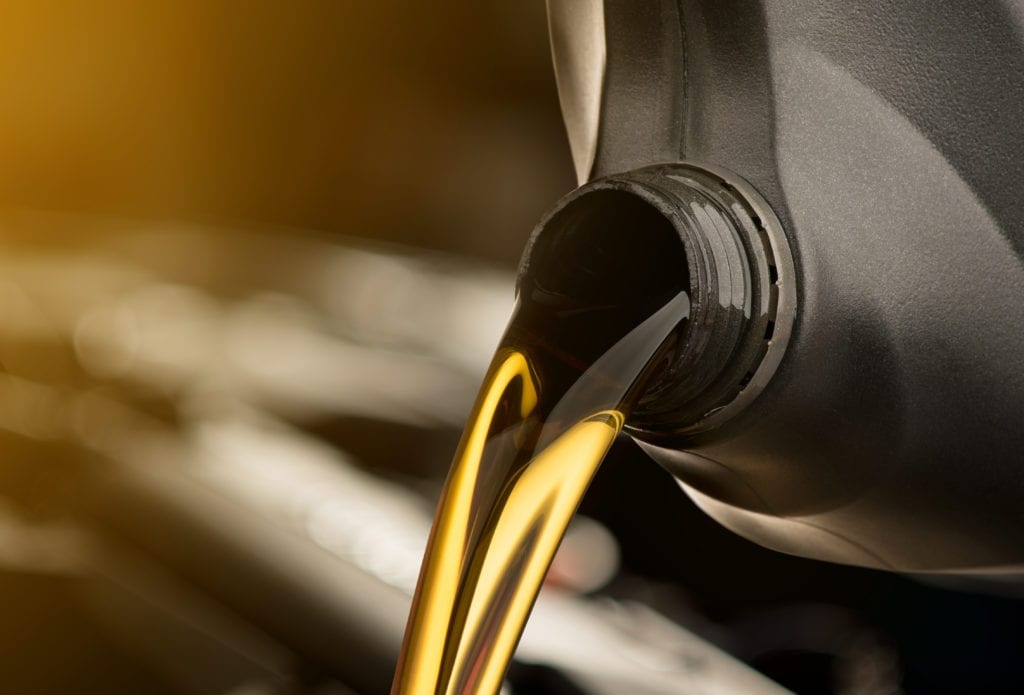
What if we never have to dig deep into the Earth just so we could move from point A to point B?
Unlikely, isn’t it?
Maybe not in a few more years. That’s because plastic can now be turned into different types of fuel through pyrolysis and hydrothermal processing.
Big words, huh? Let’s break them down.
Pyrolysis is done by heating plastic to a very high temperature and then processing it into different kinds of fuel.
Hydrothermal processing uses highly heated water to melt recycled plastics, breaking them down to their fundamental components and then turning them into oil.
Now, isn’t that better?
Another innovative way to recycle waste is by transforming plastic into hydrogen gas through a process called photoreforming.
This involves adding a light-absorbing catalyst to recycled plastic, placing it in an alkaline solution and leaving them under sunlight. The photocatalyst then absorbs the sunlight and slowly breaks down the plastic material, releasing hydrogen bubbles in the process.
Recycling plastic into fuel is still a baby at this point. Still, it has massive potential in substituting our depleting fossil fuel reserves in the future. We would probably be reaping such benefits once the process is in its toddler stages.
2. Paper
Thankfully, it is more cost-effective and energy-saving to recycle paper than to cut down trees and process wood into thin sheets.
That’s why paper products like newspapers and cardboards are typically recycled materials made from pulped recycled paper rather than natural wood fibres from forests.
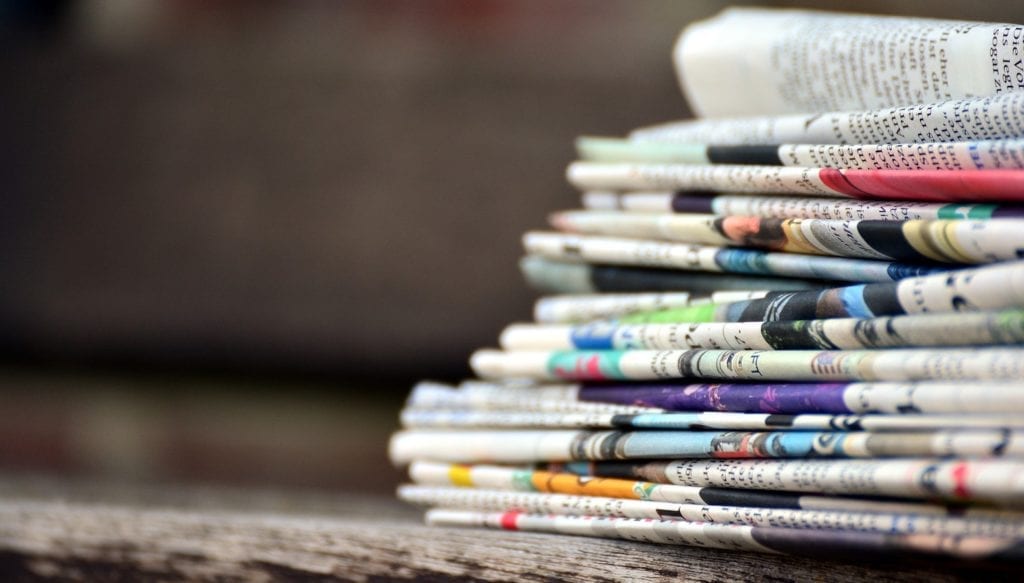
The daily newspaper and magazines we read are often recycled into tomorrow’s newspaper or made into other products like:
- directories
- building insulation
- cardboard boxes
- paper plates
- cartons like egg trays and milk boxes
Thinner types of paper are typically recycled into:
- paper towels
- toilet paper
- notebook paper
- computer paper
How is paper recycled?
There are seven stages of recycling paper.
- Collection – Paper is collected from households and transported to the recycling plant.
- Sorting – Paper is sorted into two main types: thick and thin.
- Shredding and pulping – Everything is broken down into small bits, and chemicals like hydrogen peroxide and caustic soda are added to the shredded paper. Water is added to the slurry mixture of wet shredded paper, which is heated and pulped.
- Screening – The paper is screened for any contaminants and other unwanted materials before proceeding to the next phase of recycling.
- De-inking – The paper is subjected to further screening to remove ink particles from the pulp.
- Bleaching – To produce white paper, the screened pulped is subjected to more hydrogen peroxide or chlorine dioxide to remove all colours.
- Rolling – The pulp is strained of all liquids, rolled, and then dried, turning it back into usable paper.
Here are some innovative products made from recycled paper:
Recycled paper bottles
Can you believe that you can now drink from paper?
No, you say? Well, yes, it’s true! And not just regular paper, too. Recycled paper.
Water bottles and containers are some of the most innovative products we have come up with from paper trash.
We have been recycling plastic bottle for years, but some of them still end up in the landfills. The recycled paper bottle will put an end to that, eventually.
Recycled paper bottles are easy to produce, package, and ship to different countries. It’s an innovative way of reusing paper waste and is expected to gain traction in the coming years.
A typical recycled paper bottle is designed like a regular canteen and can easily be reused and recycled.
Recycled paper furniture
Paper comes from wood. Furniture is made of wood. We always need furniture. We have tons of paper trash.
Let’s connect the dots.
Designers started experimenting with recycled materials and came up with furniture made from recycled paper.
See, we now have blow-up couches made from 100% recycled paper as well as shelves, desks, tables, and other furniture made from recycled cardboards turned into wood board substitutes.
Wood board substitutes make it possible to create furniture that is generally made out of lumber to lessen the environmental impact of deforestation.
DIY newspaper wood
Ingenuity is indeed the mother of recycling, and the DIY newspaper wood is one of its amazing kids.
You can even try this one at home! If you have enough materials, that is.
Just glue together a pile of newspapers and roll them tightly to create a “log.” The resulting material will be similar to wood in hardness.
A dutch designer named Mieke Meijer thought of making wood out of paper. He created “newspaper wood” and used it to create different kinds of furniture.
Meijer admits that newspaper wood is not a complete substitute for wood, but it will help recycle paper waste in a small, unique way.
3. Metals
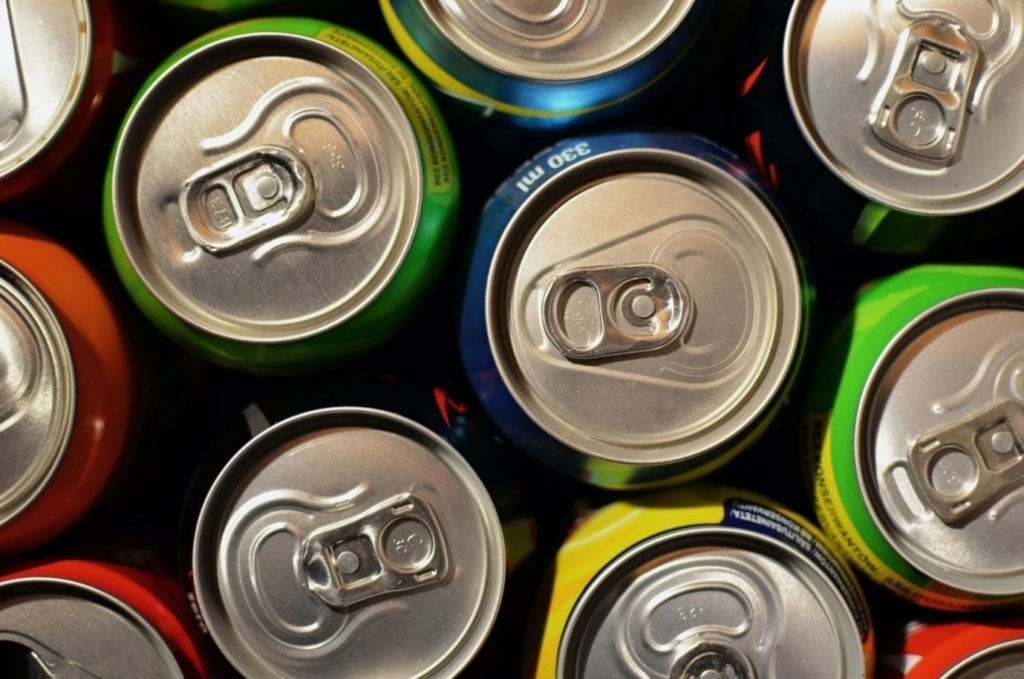
Soda, beer, tomato sauce, soups—all of these are most likely packed in metal cans that are discarded into landfills every day.
Luckily, metal cans like tin and aluminum cans can be recycled almost indefinitely.
How is metal recycled?
The process is the same as with other recyclable materials, which starts off with collection and sorting according to type.
Sorting metals can be fun and dynamic, especially in large melting plants.
Ferrous metals are separated by huge electromagnets. Rare earth metals are sorted through infrared scanning and X-rays.
The sorted metals are then melted and purified through intense heat and electrolysis. Then they are solidified into metal sheets or bars and, finally, shipped for repurposing.
Here are some examples of what recycled metals can be made into:
Home use:
- tin cans
- cooking pots
- aluminium siding, doors, and window frames
- appliances
- bed frames and mattress springs
- bathtubs
- electrical wires
- locks and doorknobs
- toys
Industrial use:
- tools
- hospital equipment
- airplanes
- automobiles
- railroads
Products made from recycled cans
Computer cases made from beer cans
Apple spearheaded the development of computer cases made from recycled materials when it announced that it was incorporating recycled aluminium in the production of metal casings for its MacBook laptops.
This initiative means millions of discarded metal cans can now be turned into gadgets.
Bicycles made from aluminium cans
Aluminium cans, like plastics, also comprise a majority of the world’s garbage.
Turning some of this garbage into a practical, self-powered, pollution-free vehicle is truly an innovation that can almost rival the bicycle’s invention.
Bicycle frames made from aluminium are strong, lightweight, and cheaper than standard bike frames.
The rise of aluminium bicycles will significantly promote pedal power, especially in heavily polluted cities and traffic-congested road networks. Called ReCycle bikes, they are slowly making their way into society.
In addition, wood-framed bicycles are also in the works. Wood-framed bikes are made from both recycled wood and sustainable lumber. Designers aim to ensure these wooden bicycle frames are as strong as aluminium frames.
Precious metals from electronic trash
There are more rare earth metals present in discarded electronics in landfill reserves than in all known global reserves. This means a landfill full of electronic devices is a gold mine.
Some companies have estimated that there is more gold in a ton of electronic garbage than in a ton of gold ore.
If only people knew how they are casually throwing away this much money!
Electronic trash is slowly climbing up the pollution ladder, and taking advantage of this mounting problem might be an excellent opportunity for entrepreneurs.
Other precious metals found in electronic waste are silver, palladium, platinum, iridium, rhodium, ruthenium, copper, and osmium.
If e-waste is adequately recycled, many precious metals can be retrieved and recycled for the next generation of electronic devices.
4. Glass
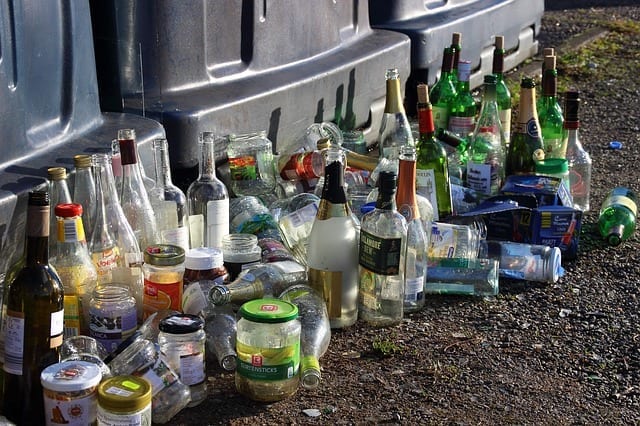
Glass is a material made from silica that is melted at high temperatures together with additives like soda ash and limestone.
Recycling glass is a bit tricky as only a little energy is saved, but what’s great is that every bottle recycled is one less piece of trash in landfills.
Glass is 100% recyclable and, unlike plastic, it doesn’t degrade in quality every time it is recycled.
How is glass recycled?
Glass is usually collected from depots and then sorted mechanically or by hand. Chemicals are then added to the crushed glass, which is then melted. Next, it is blown or moulded into containers and jars.
It’s estimated that recycling glass saves 15% of the energy typically used in making glass.
Some products made from recycled glass:
- bottles and jars
- beads
- countertops
- tiles
- sand and gravel for construction purposes
Recycled glass art
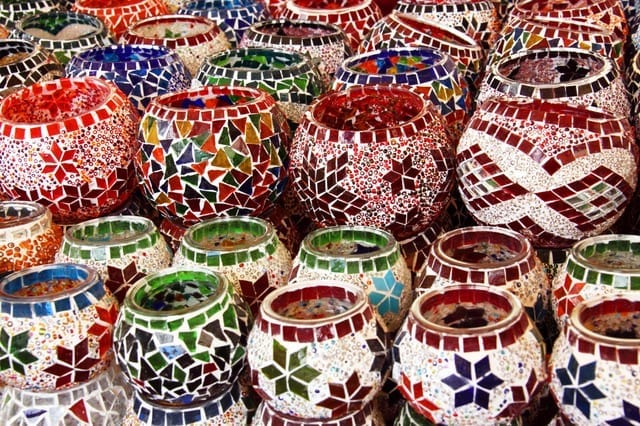
Glass is an excellent material for art.
The way light travels through glass gives it a huge potential in creating eye-catching designs.
A lot of glass artworks come from recycled material, as it’s of plentiful supply, cheap, and easily accessible compared to making glass from scratch.
You can turn up the aesthetic value of your home by simply including this recycled artwork and making your home not only more beautiful, but greener too.
Bricks made from recycled glass
Glass can be recycled and used to make bricks. Aimable Mutabazi, a young construction company owner in Rwanda, recycled glass bottles into bricks, which were more affordable yet sturdier than normal ones.
He collected old bottles and windows from the local dump and mixed them with “sand, cement, and a little bit of colouring.” The result was a “more sustainable and affordable product.”
The process not only helps solve the problem of glass waste, which does not decompose, but also minimizes carbon emissions by up to 30 per cent.
Another idea that’s being tested for strength and durability is that of transparent bricks. This new recycled-material innovation would be a game-changer in the construction industry as it’s expected to have many applications in architecture and design.
5. Wood alternatives
Another fantastic product developed from recycling materials is the wood substitute.
It’s made from a composite of recycled materials, including fabric from carpets and rags. It has proven to be more durable than wood and is both non-corroding and waterproof.
In addition, it’s practically impervious to infestation from termites (good to know!) and easy to use.
But the real upside to this type of board is that it’s eco-friendly—easy to dispose of and recycle.
These wood board substitutes are highly durable in corrosive environments and can function properly even in wet conditions, making them great materials for roofs and insulation sheets.
Innovative products made from recycled materials
Technology is constantly advancing at lightning speed, and innovation is bound to happen at every corner.
We are no longer just turning yesterday’s newspaper into tomorrow’s shopping bag. Technology and innovation have brought us excellent new products and it won’t be long before they become the norm.
Smartphones and gadgets

With the increasing amount of cell phones for sale today, it’s not surprising that many mobile phone components are recycled materials.
The plastic casing and some parts of the frames are made from recycled plastic.
Although the electronic components are mostly new materials, smartphones may eventually become 100% recyclable.
Several big gadget companies like Apple have already started development in this area. Apple’s website claims the company uses 100% recycled aluminum in its devices.
Vehicles
At the moment, many big automobile companies are already using recycled materials to make car interiors, such as the seats, cushions, dashboards, and furnishings.
Is it possible to create a car that is entirely made of recycled materials?
The answer is yes, and such a car has been made—using plastics collected from the ocean and household trash.
With sheer ingenuity and a dedication to recycling, a team of Dutch students successfully created a car from recycled materials.

The vehicle, nicknamed “Luca,” was made from PET plastic bottles, flax, and discarded appliances—and it runs on two electric motors powered by “six batteries scavenged from broken-down vehicles.”
Yes, it runs!
Well, its top speed is 90 kilometres per hour, but remember that this is made by tech students. If adopted by the big boys in the automobile industry, this concept can truly get the show on the road.
Imagine a freeway full of cars made from junk!
Join the recycling community
Wow, we’ve covered a lot of material here—recycled material, that is.
Are you excited to bring your trash to the recycling centre?
Just a note, though. Although plastic and paper in general are recyclable, not all plastic and paper materials are accepted for recycling.
Check with your local recycling facility to know what things you cannot recycle.
If you’d like to know more information about recycling or would like to bring in your refundable beverage containers to be recycled, contact us today!
Related Posts
Why Recycling Matters
Celebrate Global Recycling At Sage Hill Bottle Depot, we’re passionate about recycling and proud to be part of Calgary’s green…
New Year, Green Habits
How to Make 2025 Your Most Sustainable Year Yet We hope that your 2025 New Year’s Resolution prioritizes something that…

